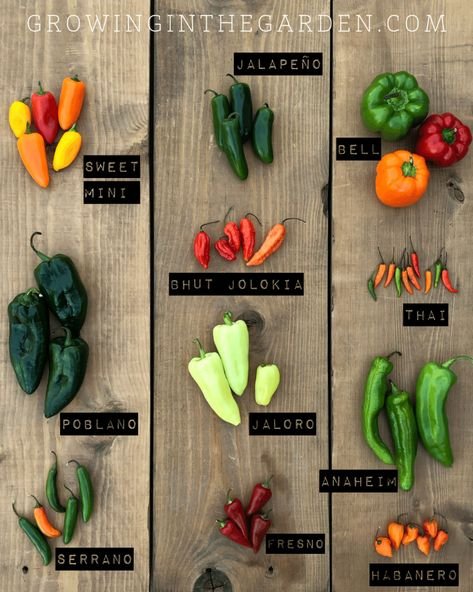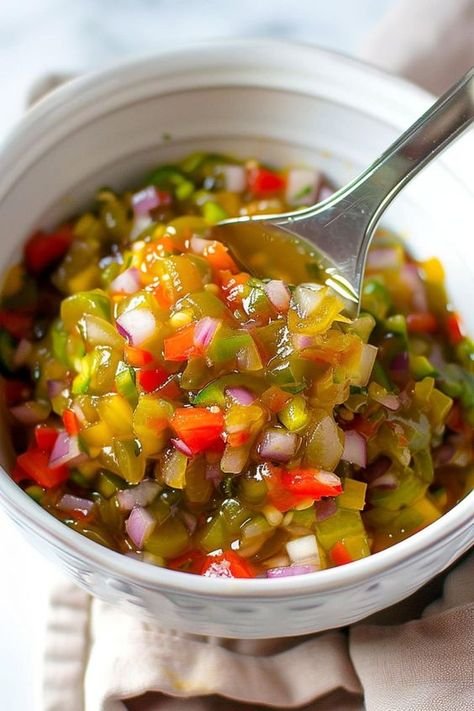Pepperoncini is a popular chili pepper known for its mild heat and tangy flavor. It is widely used in Mediterranean and Italian cuisine, often found in salads, sandwiches, and pickled varieties. Despite its mild spice, pepperoncini adds a unique taste to various dishes, making it a favorite for many spice enthusiasts.
Table of Contents
Pepperoncini: Origin and History
The pepperoncini pepper originates from Italy and Greece, where it has been cultivated for centuries. The name “pepperoncini” is often used interchangeably with “Tuscan peppers” or “Golden Greek peppers.” Historically, pepperoncini has been a staple in Mediterranean diets, prized for its ability to enhance flavors while maintaining a mild heat level.
Pepperoncini: Nutritional Benefits
Including pepperoncini in your diet can provide several health benefits. This chili pepper is low in calories and high in essential nutrients such as:
- Vitamin C – Supports immune health and skin vitality.
- Vitamin A – Essential for eye health and cell growth.
- Fiber – Promotes healthy digestion.
- Capsaicin – Provides mild anti-inflammatory benefits.
Eating pepperoncini regularly may also help boost metabolism and improve cardiovascular health.
Pepperoncini: Different Types and Varieties

There are several types of pepperoncini including:
- Italian Pepperoncini – Slightly sweeter with a bright green color.
- Greek Pepperoncini – More tangy and commonly found in pickled form.
- Fresh Pepperoncini – Used in cooking for a mild kick.
- Pickled Pepperoncini – The most popular variety, ideal for adding to dishes.
Each variety of pepperoncini offers a distinct flavor and texture, making it suitable for different culinary uses.
Pepperoncini: How It Is Used in Cooking
Pepperoncini is an incredibly versatile ingredient that can be used in numerous ways:
- Salads – Adds a tangy crunch to Greek and Italian salads.
- Sandwiches and Wraps – Enhances the taste with a mild heat.
- Pizzas and Pasta – Complements cheesy and tomato-based dishes.
- Marinades and Sauces – Provides depth to sauces and meat marinades.
- Pickled Pepperoncini – Enjoyed as a snack or side dish.
Pepperoncini: How to Pickle and Store
Pickling pepperoncini at home is a simple process. Follow these steps:
- Wash and slice fresh pepperoncini peppers.
- Prepare a brine using vinegar, water, salt, and sugar.
- Place the pepperoncini in a sterilized jar and pour the brine over them.
- Seal the jar and store it in the refrigerator for at least a week.
Proper storage of pepperoncini ensures its freshness and extends its shelf life. Keep fresh pepperoncini in a cool, dry place or refrigerate it for longer preservation.
Pepperoncini: Spiciness Level and Taste Profile
On the Scoville Heat Scale, pepperoncini measures between 100-500 SHU, making it one of the mildest chili peppers. The flavor profile of pepperoncini is characterized by:
- Mild Heat – Just enough spice to add a kick without overwhelming.
- Slight Sweetness – Complements tangy dishes.
- Tangy and Zesty – Perfect for pickling and marinating.
Pepperoncini: Health Benefits and Potential Risks
Eating pepperoncini can provide several health advantages, such as:
- Boosting Metabolism – Capsaicin in pepperoncini can enhance fat burning.
- Supporting Digestion – High fiber content helps with gut health.
- Reducing Inflammation – Mild anti-inflammatory properties can benefit joint health.
However, excessive consumption of pepperoncini may cause digestive discomfort or acid reflux in sensitive individuals.
Pepperoncini: Comparing with Other Peppers
Compared to other chili peppers, pepperoncini is much milder. Here’s how it compares:
- Jalapeño – 2,500-8,000 SHU, significantly hotter than pepperoncini.
- Banana Pepper – Similar in heat but slightly sweeter.
- Bell Pepper – No heat, making pepperoncini a better option for mild spice lovers.
Pepperoncini: Popular Recipes

Try these delicious recipes using pepperoncini:
- Pepperoncini Chicken – Slow-cooked chicken with pepperoncini and garlic.
- Pepperoncini Pasta – A tangy, mildly spicy pasta dish.
- Greek Salad with Pepperoncini – A refreshing salad featuring feta cheese, olives, and pepperoncini.
Pepperoncini: Where to Buy and How to Choose the Best Ones
You can find pepperoncini in grocery stores, farmer’s markets, or online. When choosing fresh pepperoncini, look for:
- Bright Green Color – Indicates freshness.
- Firm Texture – Avoid soft or wrinkled peppers.
- Mild Aroma – A fresh scent suggests high quality.
Pepperoncini: Fun Facts About This Tasty Pepper
- Pepperoncini is often mistaken for banana peppers due to their similar shape.
- The word pepperoncini is derived from Italian, meaning “small peppers.”
- Pepperoncini is commonly served as a garnish in Mediterranean and American dishes.
Also read What Beats Rock The Ultimate Guide to Winning Strategies
Pepperoncini: Conclusion
Whether pickled, fresh, or added to a meal, pepperoncini offers a mild heat and tangy flavor that enhances various dishes. Its nutritional benefits, versatility, and delicious taste make pepperoncini a must-have in every kitchen. Enjoy experimenting with pepperoncini in your favorite recipes and discover new ways to add a spicy twist to your meals!


